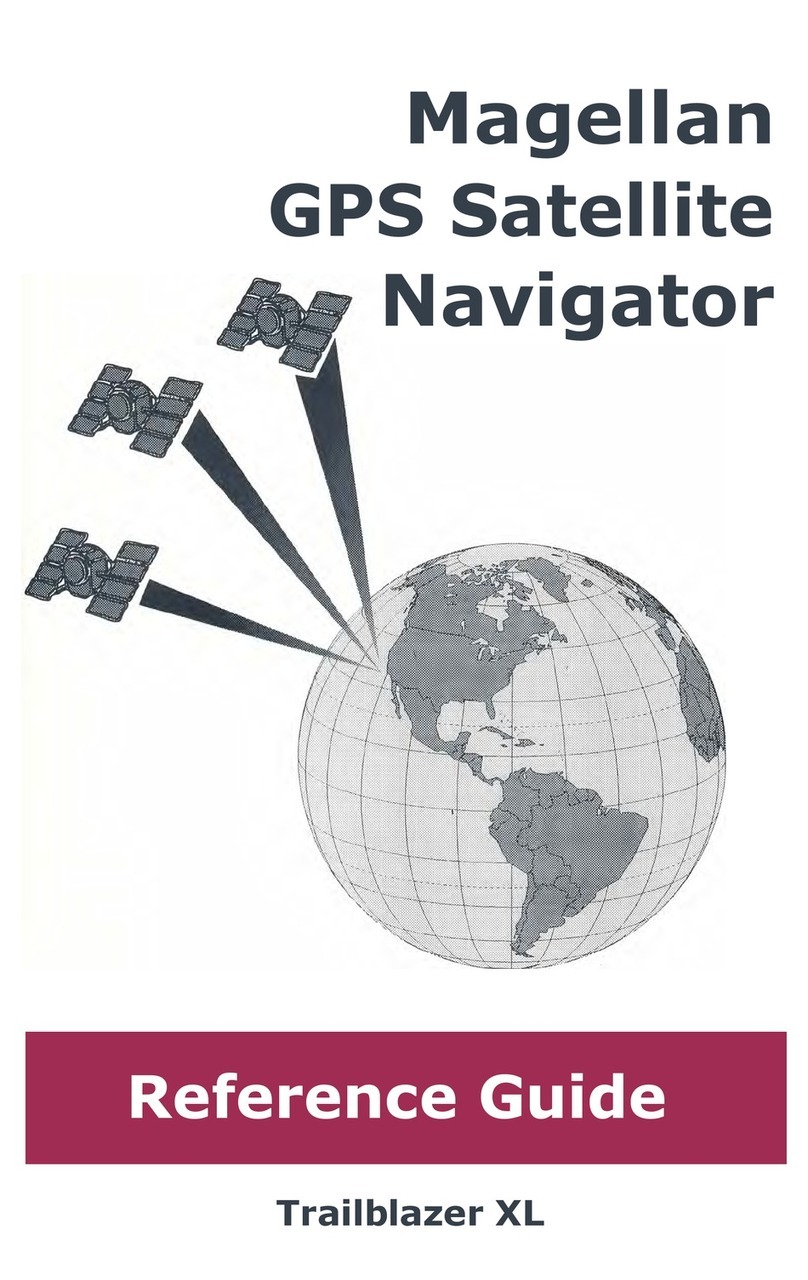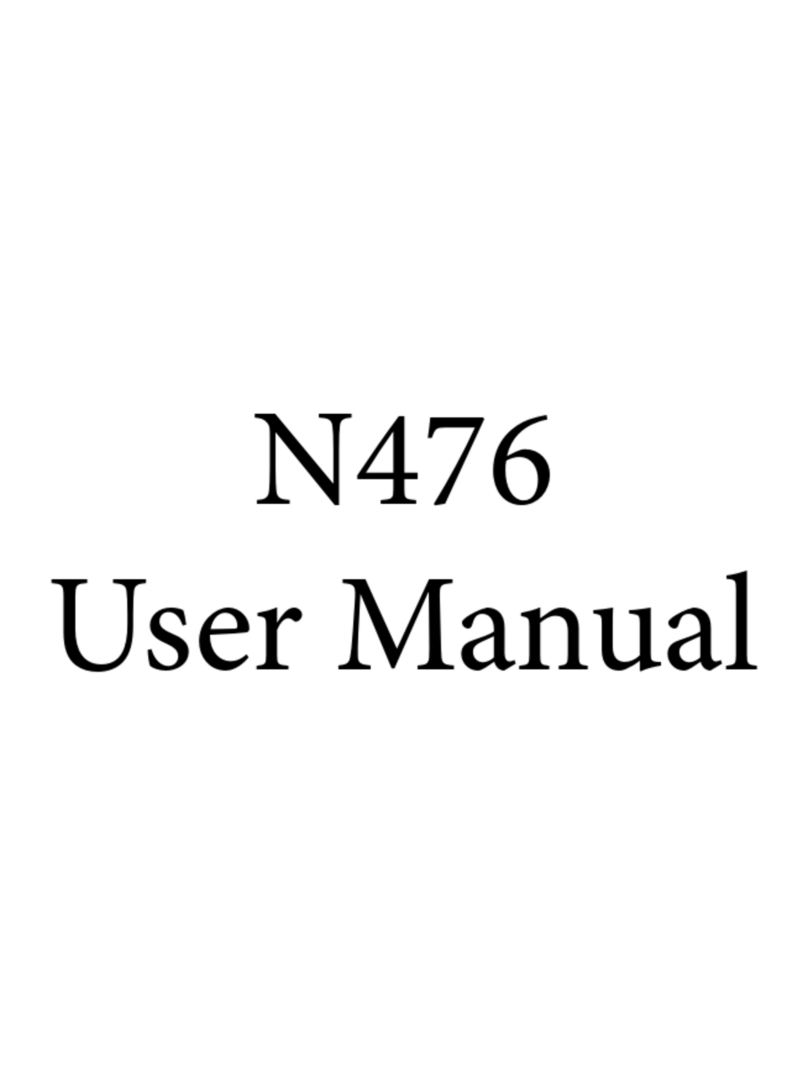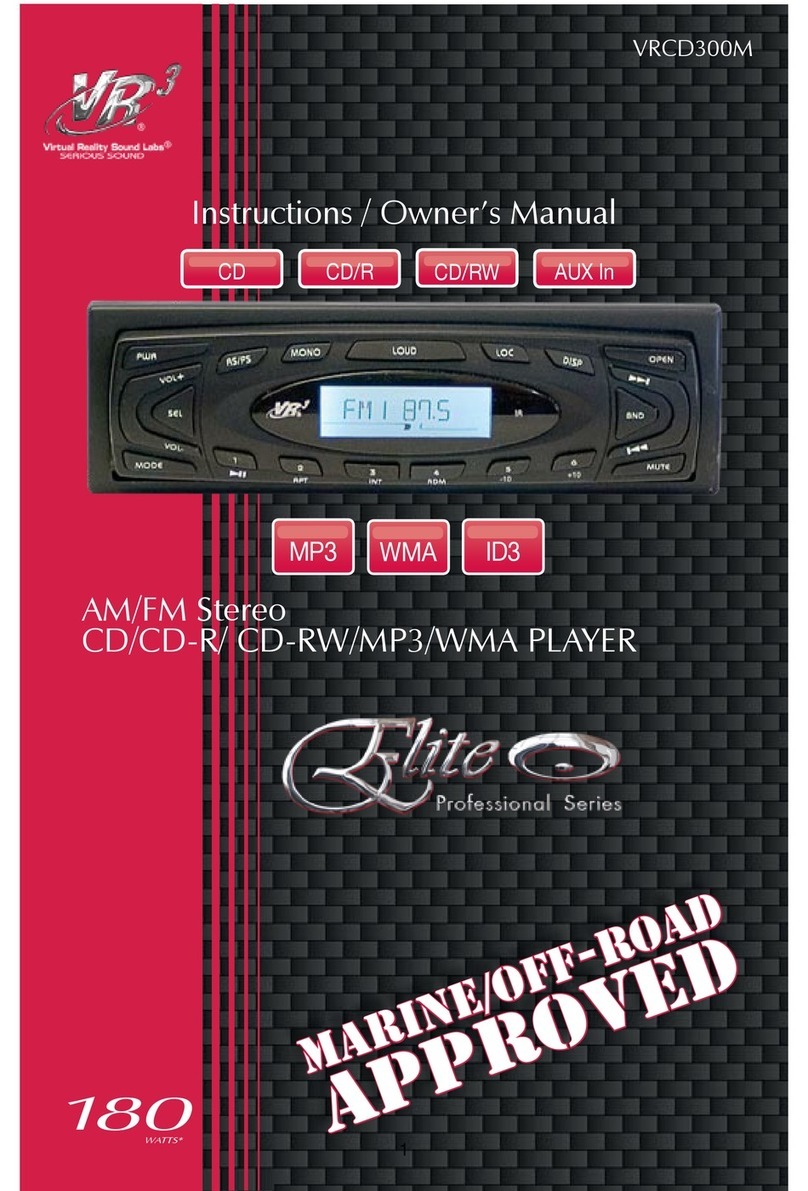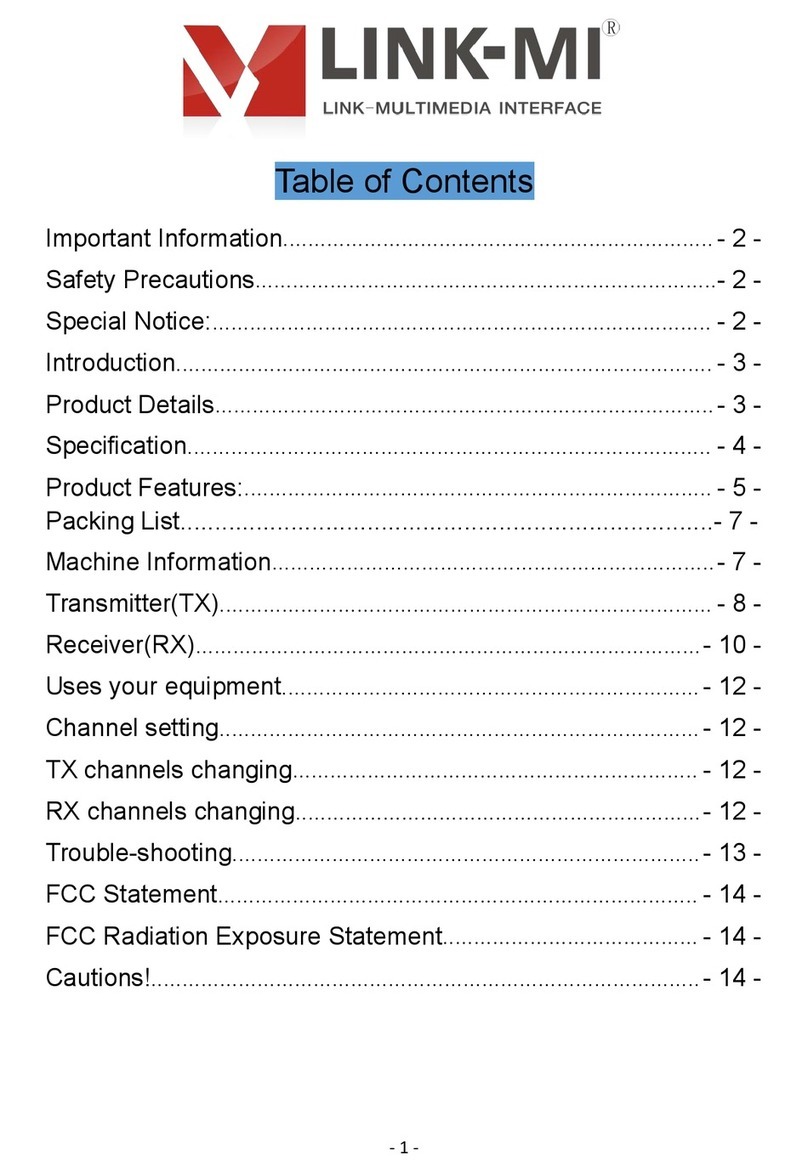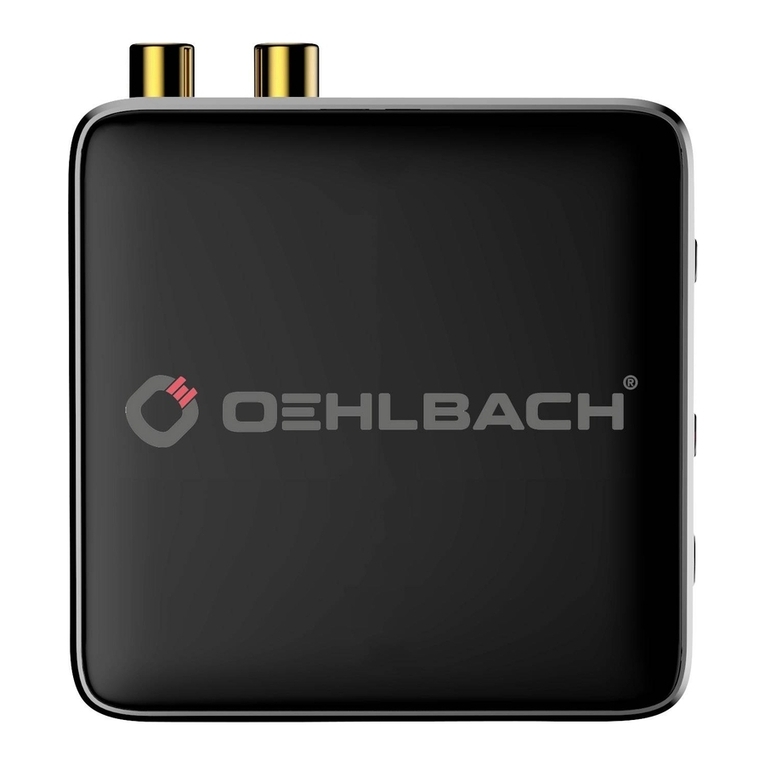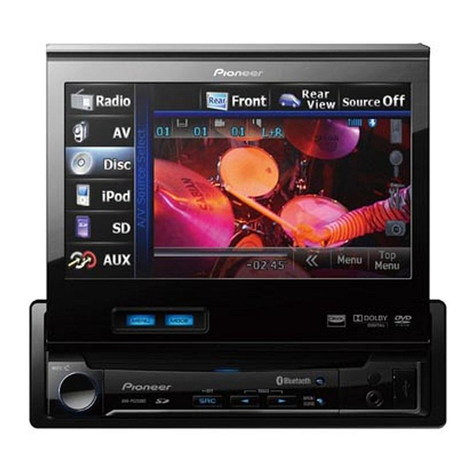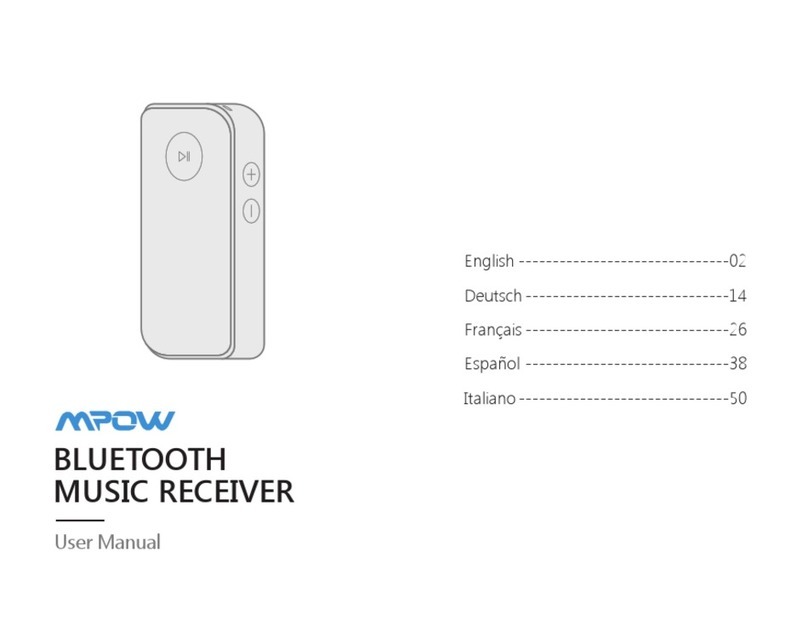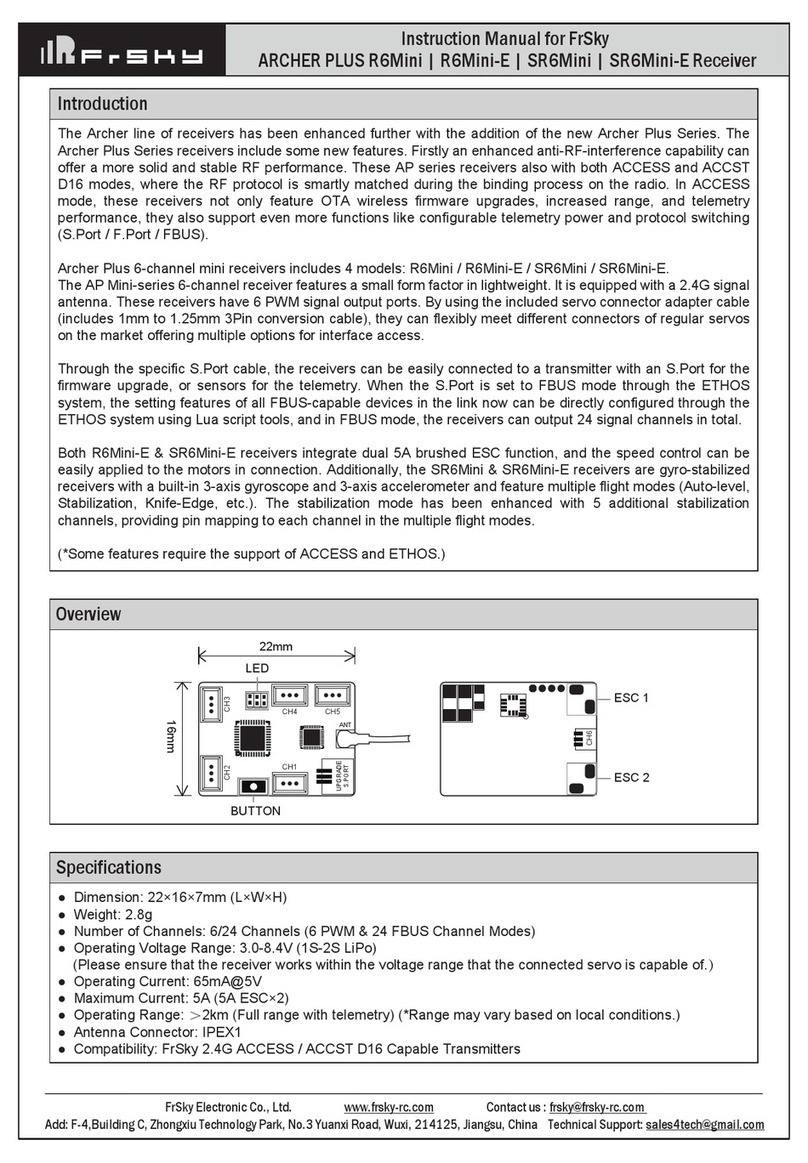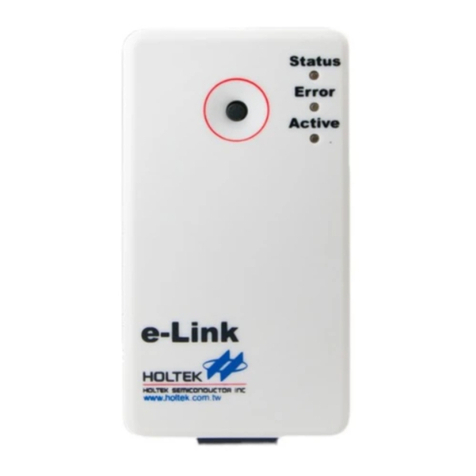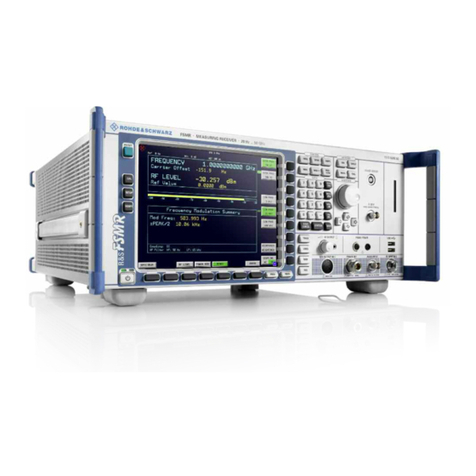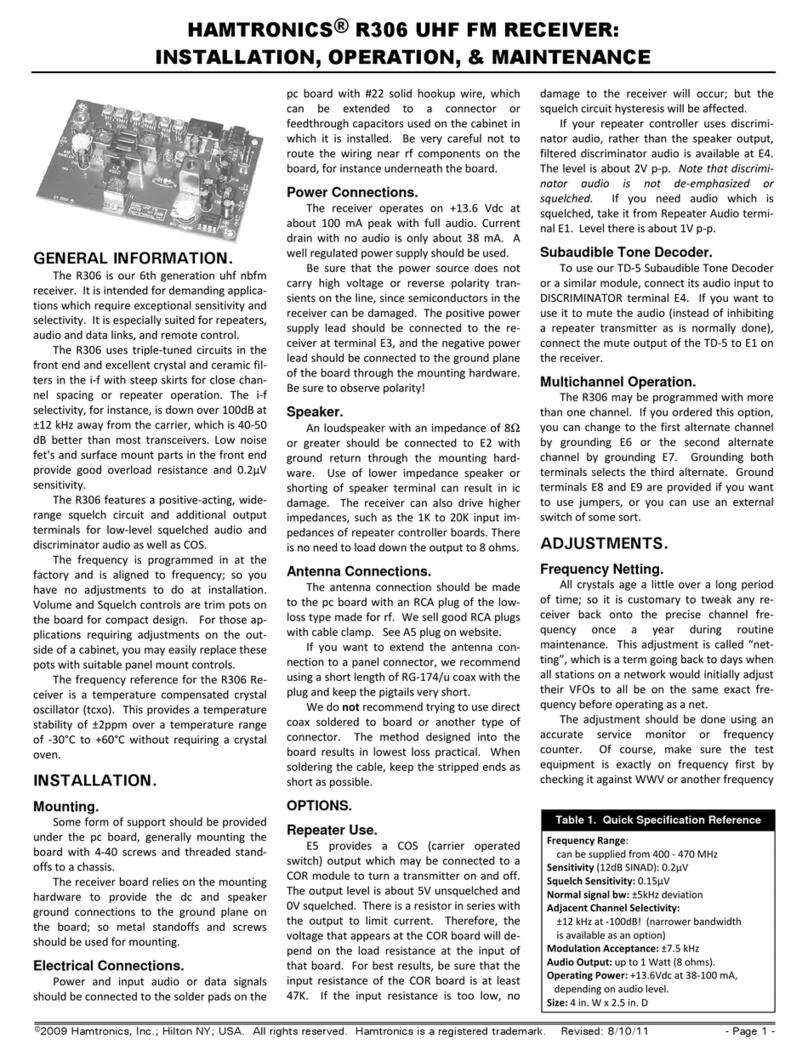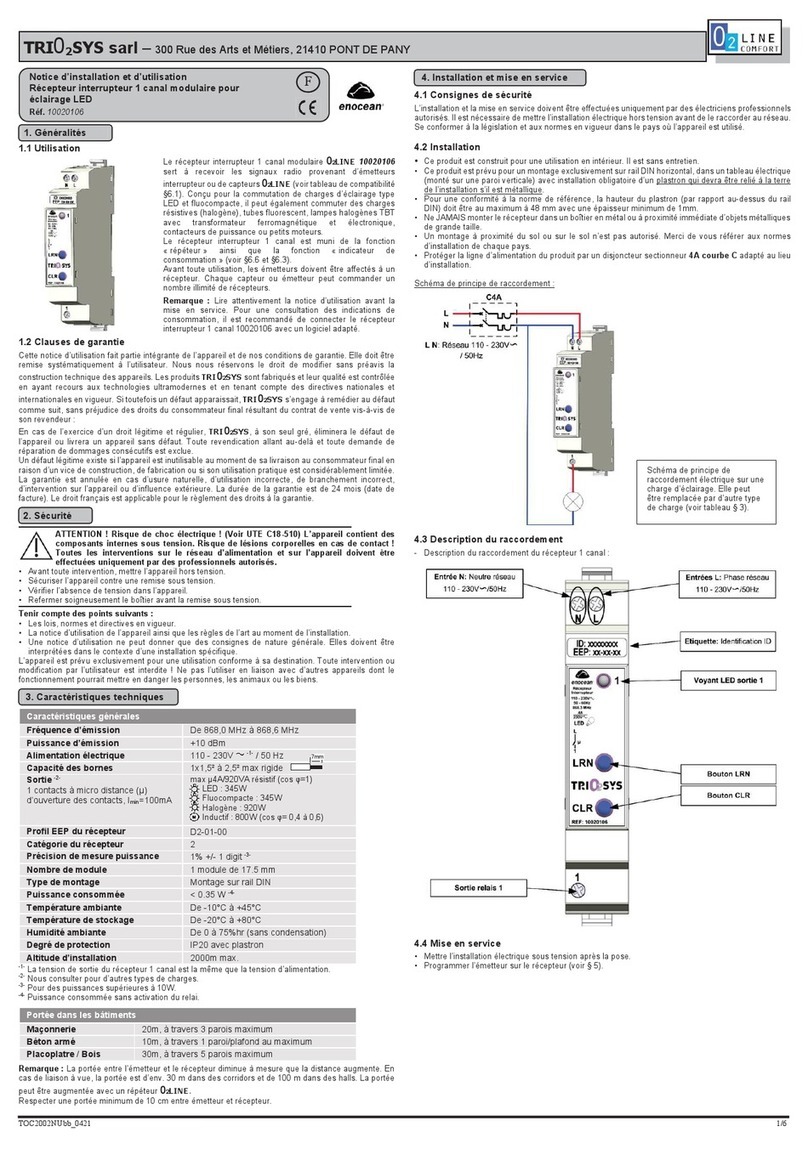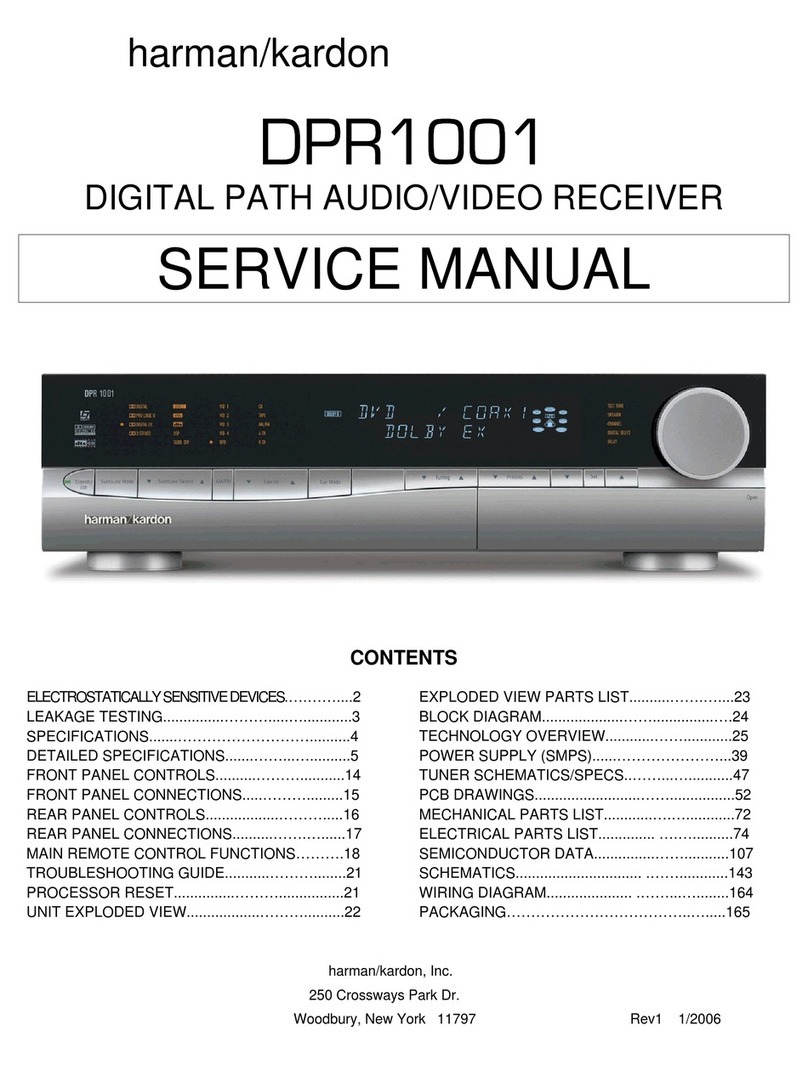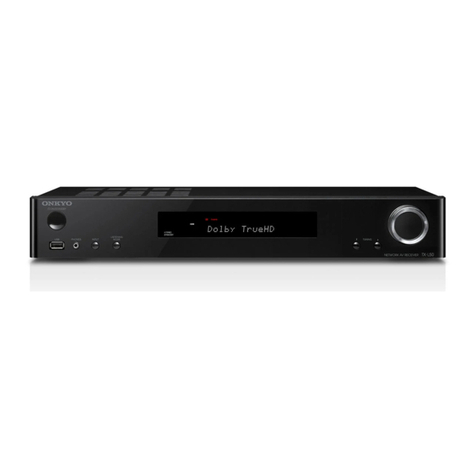Magellan ProFlex 500 User manual

ProFlex™500
Reference Manual
Preliminary

Copyright Notice
Copyright 2009 Magellan Navigation. All rights re-
served.
Trademarks
All product and brand names mentioned in this pub-
lication are trademarks of their respective holders.
FCC Notice
ProFlex 500 Receiver complies with the limits for a
Class B digital device, pursuant to the Part 15 of the
FCC rules when it is used in Portable Mode. See Note
below related to Class B device.
Class B digital devices NOTE: This equipment has
been tested and found to comply with the limits for
a Class B digital device, pursuant to Part 15 of the
FCC Rules. These limits are designed to provide rea-
sonable protection against harmful interference in a
residential installation. This equipment generates,
uses, and can radiate radio frequency energy and, if
not installed and used in accordance with the in-
structions, may cause harmful interference to radio
communications. However, there is no guarantee that
interference will not occur in a particular installation.
If this equipment does cause harmful interference to
radio or television reception, which can be deter-
mined by turning the equipment off and on, the user
is encouraged to try and correct the interference by
one or more of the following measures:
– Reorient or locate the receiving antenna.
– Increase the separation between the equipment
and receiver.
– Connect the equipment into an outlet on a cir-
cuit different from that to which the receiver is
connected.
– Consult the dealer or an experienced radio/TV
technician for help.
When ProFlex 500 is used with an external power
supply or connected to an external device using the
USB port, it complies with the limits for a Class A
digital device, pursuant to the Part 15 of the FCC
rules. See Note below related to Class A device.
Class A digital devices NOTE: This equipment has
been tested and found to comply with the limits for
a Class A digital device, pursuant to Part 15 of the
FCC Rules. These limits are designed to provide rea-
sonable protection against harmful interference
when the equipment is operated in a commercial en-
vironment. This equipment generates, uses, and can
radiate radio frequency energy and, if not installed
and used in accordance with the instruction manual,
may cause harmful interference to radio communica-
tions. Operation of this equipment in a residential
area is likely to cause harmful interference in which
case the user will be required to correct the interfer-
ence at his own expense.
Remark: Any changes or modifications not expressly
approved by Magellan Navigation, could void the
right for user to operate the equipment.
RF Safety Exposure To Radio Frequency Energy
(SAR)
Radio transmitting devices radiate Radio Frequency
(RF) energy during its operation. RF energy can be
absorbed into the human body and potentially can
cause adverse health effects if excessive levels are
absorbed. The unit of measurement for human expo-
sure to RF energy is "Specific Absorption Rate"
(SAR).
The Federal Communications Commission (FCC), In-
dustrie Canada (IC), and other agencies around the
world have established limits that incorporate a sub-
stantial safety margin designed to assure the safety
of all persons using this equipment. In order to certi-
fy this unit for sale in the US, Canada and Europe
this unit has been tested for RF exposure compliance
at a qualified test laboratory and found to comply
with the regulations regarding exposure to RF Energy.
SAR was measured with the unit (GSM Module)
transmitting at its maximum certified RF power. Of-
ten, however, during normal operation the unit (GSM
Module) will transmit much less than maximum pow-
er. Transmit power is controlled automatically and, in
general is reduced as you get closer to a cellular base
station. This reduction in transmit power will result
in a lower RF energy exposure and resulting SAR val-
ue.
FCC and CE UHF Safety Statement
The different versions of the UHF Transmitters are
FCC and CE compliant.
In order to comply with FCC and CE RF exposure
safety guidelines as body-worn, normal use of unit,
the following must be followed:
A distance of AT LEAST 10 feet (3 m) of separation
between the users body and the unit (UHF Transmit-
ter). This distance has been defined taken into ac-
count the FCC and CE Requirements and the worst
output power configuration.
Do NOT use the device in a manner such that it is in
direct contact with the body (e.g. on the lap). Such
use will likely exceed FCC RF safety exposure limits.
See www.fcc.gov/oet/rfsafety/ for more information
on RF exposure safety.
To comply with CE and FCC electrical safety regula-
tions, ProMark 500 should only be powered from a
6 to 28 V DC external source, with 20 W power limi-
tation, or the recommended battery (P/N 111374).
The battery should be charged only with the supplied
battery charger (P/N 802064).
Replacing the Magellan U-Link Transmitter Power
Fuse
The Magellan U-Link transmitter is protected by a 4-
A fuse inserted in the data/power cable. This Y-
shaped cable is used to connect the U-Link transmit-
ter to the ProFlex 500 receiver via a 7-pin connector,
and to the power battery.
Should you have to replace this fuse, please get a
spare fuse, 4 A, fast acting, ATO type, and then do
the following:
– Unplug the battery end of the data/power cable
– Open the fuse holder located along the data/
power cable
– Extract the damaged fuse
– Insert the new fuse and then push the holder lid
back into place
– Connect the data/power cable back to the bat-
tery.

Magellan Professional Products - Limited Warranty
(North, Central and South America)
Magellan Navigation warrants their GPS receivers
and hardware accessories to be free of defects in ma-
terial and workmanship and will conform to our pub-
lished specifications for the product for a period of
one year from the date of original purchase. THIS
WARRANTY APPLIES ONLY TO THE ORIGINAL
PURCHASER OF THIS PRODUCT.
In the event of a defect, Magellan Navigation will, at
its option, repair or replace the hardware product
with no charge to the purchaser for parts or labor. The
repaired or replaced product will be warranted for 90
days from the date of return shipment, or for the bal-
ance of the original warranty, whichever is longer.
Magellan Navigation warrants that software products
or software included in hardware products will be
free from defects in the media for a period of 30 days
from the date of shipment and will substantially con-
form to the then-current user documentation provid-
ed with the software (including updates thereto).
Magellan Navigation's sole obligation shall be the
correction or replacement of the media or the soft-
ware so that it will substantially conform to the then-
current user documentation. Magellan Navigation
does not warrant the software will meet purchaser's
requirements or that its operation will be uninterrupt-
ed, error-free or virus-free. Purchaser assumes the
entire risk of using the software.
PURCHASER'S EXCLUSIVE REMEDY UNDER THIS
WRITTEN WARRANTY OR ANY IMPLIED WARRAN-
TY SHALL BE LIMITED TO THE REPAIR OR RE-
PLACEMENT, AT MAGELLAN NAVIGATION'S
OPTION, OF ANY DEFECTIVE PART OF THE RE-
CEIVER OR ACCESSORIES WHICH ARE COVERED
BY THIS WARRANTY. REPAIRS UNDER THIS WAR-
RANTY SHALL ONLY BE MADE AT AN AUTHORIZED
MAGELLAN NAVIGATION SERVICE CENTER. ANY
REPAIRS BY A SERVICE CENTER NOT AUTHO-
RIZED BY MAGELLAN NAVIGATION WILL VOID
THIS WARRANTY.
To obtain warranty service the purchaser must obtain
a Return Materials Authorization (RMA) number prior
to shipping by calling 1-800-229-2400 (press op-
tion #1) (U.S.) or 1-408-615-3981 (International),
or by submitting a repair request on-line at:
http://professional.magellangps.com/en/support/
rma.asp. The purchaser must return the product
postpaid with a copy of the original sales receipt to
the address provided by Magellan Navigation with
the RMA number. Purchaser’s return address and the
RMA number must be clearly printed on the outside
of the package.
Magellan Navigation reserves the right to refuse to
provide service free-of-charge if the sales receipt is
not provided or if the information contained in it is
incomplete or illegible or if the serial number is al-
tered or removed. Magellan Navigation will not be re-
sponsible for any losses or damage to the product
incurred while the product is in transit or is being
shipped for repair. Insurance is recommended. Ma-
gellan Navigation suggests using a trackable ship-
ping method such as UPS or FedEx when returning a
product for service.
EXCEPT AS SET FORTH IN THIS LIMITED WAR-
RANTY, ALL OTHER EXPRESSED OR IMPLIED
WARRANTIES, INCLUDING THOSE OF FITNESS
FOR ANY PARTICULAR PURPOSE, MERCHANT-
ABILITY OR NON-INFRINGEMENT, ARE HEREBY
DISCLAIMED AND IF APPLICABLE, IMPLIED WAR-
RANTIES UNDER ARTICLE 35 OF THE UNITED NA-
TIONS CONVENTION ON CONTRACTS FOR THE
INTERNATIONAL SALE OF GOODS. Some national,
state, or local laws do not allow limitations on im-
plied warranty or how long an implied warranty lasts,
so the above limitation may not apply to you.
The following are excluded from the warranty cover-
age: (1) periodic maintenance and repair or replace-
ment of parts due to normal wear and tear; (2)
batteries and finishes; (3) installations or defects re-
sulting from installation; (4) any damage caused by
(i) shipping, misuse, abuse, negligence, tampering,
or improper use; (ii) disasters such as fire, flood,
wind, and lightning; (iii) unauthorized attachments
or modification; (5) service performed or attempted
by anyone other than an authorized Magellan Naviga-
tions Service Center; (6) any product, components or
parts not manufactured by Magellan Navigation; (7)
that the receiver will be free from any claim for in-
fringement of any patent, trademark, copyright or
other proprietary right, including trade secrets; and
(8) any damage due to accident, resulting from inac-
curate satellite transmissions. Inaccurate transmis-
sions can occur due to changes in the position,
health or geometry of a satellite or modifications to
the receiver that may be required due to any change
in the GPS. (Note: Magellan Navigation GPS receiv-
ers use GPS or GPS+GLONASS to obtain position,
velocity and time information. GPS is operated by the
U.S. Government and GLONASS is the Global Navi-
gation Satellite System of the Russian Federation,
which are solely responsible for the accuracy and
maintenance of their systems. Certain conditions can
cause inaccuracies which could require modifica-
tions to the receiver. Examples of such conditions in-
clude but are not limited to changes in the GPS or
GLONASS transmission.) Opening, dismantling or
repairing of this product by anyone other than an au-
thorized Magellan Navigation Service Center will void
this warranty.
MAGELLAN NAVIGATION SHALL NOT BE LIABLE
TO PURCHASER OR ANY OTHER PERSON FOR ANY
INCIDENTAL OR CONSEQUENTIAL DAMAGES
WHATSOEVER, INCLUDING BUT NOT LIMITED TO
LOST PROFITS, DAMAGES RESULTING FROM DE-
LAY OR LOSS OF USE, LOSS OF OR DAMAGES
ARISING OUT OF BREACH OF THIS WARRANTY OR
ANY IMPLIED WARRANTY EVEN THOUGH CAUSED
BY NEGLIGENCE OR OTHER FAULT OFMAGELLAN
NAVIGATION OR NEGLIGENT USAGE OF THE
PRODUCT. IN NO EVENT WILL MAGELLAN NAVI-
GATION BE RESPONSIBLE FOR SUCH DAMAGES,
EVEN IF MAGELLAN NAVIGATION HAS BEEN AD-
VISED OF THE POSSIBILITY OF SUCH DAMAGES.
This written warranty is the complete, final and ex-
clusive agreement between Magellan Navigation and
the purchaser with respect to the quality of perfor-
mance of the goods and any and all warranties and
representations. This warranty sets forth all of Magel-
lan Navigation's responsibilities regarding this prod-
uct. This limited warranty is governed by the laws of
the State of California, without reference to its con-
flict of law provisions or the U.N. Convention on Con-
tracts for the International Sale of Goods, and shall
benefit Magellan Navigation, its successors and as-
signs.
This warranty gives the purchaser specific rights. The
purchaser may have other rights which vary from lo-
cality to locality (including Directive 1999/44/EC in
the EC Member States) and certain limitations con-
tained in this warranty, including the exclusion or
limitation of incidental or consequential damages
may not apply.

For further information concerning this limited war-
ranty, please call or write:
Magellan Navigation, Inc., 471 El Camino Real, San-
ta Clara, CA 95050-4300, Phone: +1 408 615
5100, Fax: + +1 408 615 5200 or
Magellan Navigation SAS - ZAC La Fleuriaye - BP
433 - 44474 Carquefou Cedex - France Phone: +33
(0)2 28 09 38 00, Fax: +33 (0)2 28 09 39 39.
Magellan Professional Products Limited Warranty
(Europe, Middle East, Africa)
All Magellan Navigation global positioning system
(GPS) receivers are navigation aids, and are not in-
tended to replace other methods of navigation. Pur-
chaser is advised to perform careful position charting
and use good judgment. READ THE USER GUIDE
CAREFULLY BEFORE USING THE PRODUCT.
1. MAGELLAN NAVIGATION WARRANTY
Magellan Navigation warrants their GPS receivers
and hardware accessories to be free of defects in ma-
terial and workmanship and will conform to our pub-
lished specifications for the product for a period of
one year from the date of original purchase or such
longer period as required by law. THIS WARRANTY
APPLIES ONLY TO THE ORIGINAL PURCHASER OF
THIS PRODUCT.
In the event of a defect, Magellan Navigation will, at
its option, repair or replace the hardware product
with no charge to the purchaser for parts or labor. The
repaired or replaced product will be warranted for 90
days from the date of return shipment, or for the bal-
ance of the original warranty, whichever is longer.
Magellan Navigation warrants that software products
or software included in hardware products will be
free from defects in the media for a period of 30 days
from the date of shipment and will substantially con-
form to the then-current user documentation provid-
ed with the software (including updates thereto).
Magellan Navigation's sole obligation shall be the
correction or replacement of the media or the soft-
ware so that it will substantially conform to the then-
current user documentation. Magellan Navigation
does not warrant the software will meet purchaser's
requirements or that its operation will be uninterrupt-
ed, error-free or virus-free. Purchaser assumes the
entire risk of using the software.
2. PURCHASER'S REMEDY
PURCHASER'S EXCLUSIVE REMEDY UNDER THIS
WRITTEN WARRANTY OR ANY IMPLIED WARRAN-
TY SHALL BE LIMITED TO THE REPAIR OR RE-
PLACEMENT, AT MAGELLAN NAVIGATION'S
OPTION, OF ANY DEFECTIVE PART OF THE RE-
CEIVER OR ACCESSORIES WHICH ARE COVERED
BY THIS WARRANTY. REPAIRS UNDER THIS WAR-
RANTY SHALL ONLY BE MADE AT AN AUTHORIZED
MAGELLAN NAVIGATION SERVICE CENTER. ANY
REPAIRS BY A SERVICE CENTER NOT AUTHO-
RIZED BY MAGELLAN NAVIGATION WILL VOID
THIS WARRANTY.
3. PURCHASER'S DUTIES
To obtain service, contact and return the product
with a copy of the original sales receipt to the dealer
from whom you purchased the product.
Magellan Navigation reserves the right to refuse to
provide service free-of-charge if the sales receipt is
not provided or if the information contained in it is
incomplete or illegible or if the serial number is al-
tered or removed. Magellan Navigation will not be re-
sponsible for any losses or damage to the product
incurred while the product is in transit or is being
shipped for repair. Insurance is recommended. Ma-
gellan Navigation suggests using a trackable ship-
ping method such as UPS or FedEx when returning a
product for service.
4. LIMITATION OF IMPLIED WARRANTIES
EXCEPT AS SET FORTH IN ITEM 1 ABOVE, ALL
OTHER EXPRESSED OR IMPLIED WARRANTIES,
INCLUDING THOSE OF FITNESS FOR ANY PARTIC-
ULAR PURPOSE OR MERCHANTABILITY, ARE
HEREBY DISCLAIMED AND IF APPLICABLE, IM-
PLIED WARRANTIES UNDER ARTICLE 35 OF THE
UNITED NATIONS CONVENTION ON CONTRACTS
FOR THE INTERNATIONAL SALE OF GOODS.
Some national, state, or local laws do not allow limi-
tations on implied warranty or how long an implied
warranty lasts, so the above limitation may not apply
to you.
5. EXCLUSIONS
The following are excluded from the warranty cover-
age:
(1) periodic maintenance and repair or replacement
of parts due to normal wear and tear;
(2) batteries;
(3) finishes;
(4) installations or defects resulting from installa-
tion;
(5) any damage caused by (i) shipping, misuse,
abuse, negligence, tampering, or improper use; (ii)
disasters such as fire, flood, wind, and lightning; (iii)
unauthorized attachments or modification;
(6) service performed or attempted by anyone other
than an authorized Magellan Navigations Service
Center;
(7) any product, components or parts not manufac-
tured by Magellan Navigation,
(8) that the receiver will be free from any claim for
infringement of any patent, trademark, copyright or
other proprietary right, including trade secrets
(9) any damage due to accident, resulting from inac-
curate satellite transmissions. Inaccurate transmis-
sions can occur due to changes in the position,
health or geometry of a satellite or modifications to
the receiver that may be required due to any change
in the GPS. (Note: Magellan Navigation GPS receiv-
ers use GPS or GPS+GLONASS to obtain position,
velocity and time information. GPS is operated by the
U.S. Government and GLONASS is the Global Navi-
gation Satellite System of the Russian Federation,
which are solely responsible for the accuracy and
maintenance of their systems. Certain conditions can
cause inaccuracies which could require modifica-
tions to the receiver. Examples of such conditions in-
clude but are not limited to changes in the GPS or
GLONASS transmission.).
Opening, dismantling or repairing of this product by
anyone other than an authorized Magellan Navigation
Service Center will void this warranty.
6. EXCLUSION OF INCIDENTAL OR CONSEQUEN-
TIAL DAMAGES
MAGELLAN NAVIGATION SHALL NOT BE LIABLE
TO PURCHASER OR ANY OTHER PERSON FOR ANY
INDIRECT, INCIDENTAL OR CONSEQUENTIAL
DAMAGES WHATSOEVER, INCLUDING BUT NOT
LIMITED TO LOST PROFITS, DAMAGES RESULT-

ING FROM DELAY OR LOSS OF USE, LOSS OF OR
DAMAGES ARISING OUT OF BREACH OF THIS
WARRANTY OR ANY IMPLIED WARRANTY EVEN
THOUGH CAUSED BY NEGLIGENCE OR OTHER
FAULT OFMAGELLAN NAVIGATION OR NEGLIGENT
USAGE OF THE PRODUCT. IN NO EVENT WILL MA-
GELLAN NAVIGATION BE RESPONSIBLE FOR
SUCH DAMAGES, EVEN IF MAGELLAN NAVIGA-
TION HAS BEEN ADVISED OF THE POSSIBILITY OF
SUCH DAMAGES.
Some national, state, or local laws do not allow the
exclusion or limitation of incidental or consequential
damages, so the above limitation or exclusion may
not apply to you.
7. COMPLETE AGREEMENT
This written warranty is the complete, final and ex-
clusive agreement between Magellan Navigation and
the purchaser with respect to the quality of perfor-
mance of the goods and any and all warranties and
representations. THIS WARRANTY SETS FORTH ALL
OF MAGELLAN NAVIGATION'S RESPONSIBILITIES
REGARDING THIS PRODUCT.
THIS WARRANTY GIVES YOU SPECIFIC RIGHTS.
YOU MAY HAVE OTHER RIGHTS WHICH VARY
FROM LOCALITY TO LOCALITY (including Directive
1999/44/EC in the EC Member States) AND CER-
TAIN LIMITATIONS CONTAINED IN THIS WARRAN-
TY MAY NOT APPLY TO YOU.
8. CHOICE OF LAW.
This limited warranty is governed by the laws of
France, without reference to its conflict of law provi-
sions or the U.N. Convention on Contracts for the In-
ternational Sale of Goods, and shall benefit Magellan
Navigation, its successors and assigns.
THIS WARRANTY DOES NOT AFFECT THE CUS-
TOMER'S STATUTORY RIGHTS UNDER APPLICA-
BLE LAWS IN FORCE IN THEIR LOCALITY, NOR
THE CUSTOMER'S RIGHTS AGAINST THE DEALER
ARISING FROM THEIR SALES/PURCHASE CON-
TRACT (such as the guarantees in France for latent
defects in accordance with Article 1641 et seq of the
French Civil Code).
For further information concerning this limited war-
ranty, please call or write:
Magellan Navigation SAS - ZAC La Fleuriaye - BP
433 - 44474 Carquefou Cedex - France.
Phone: +33 (0)2 28 09 38 00, Fax: +33 (0)2 28 09
39 39.
NOTICE:
The FCC (Federal Communications Commission) re-
quests that equipment manufacturers take every step
to increase user awareness about the responsibilities
inherent in being an FCC licensee on shared chan-
nels.
Users are indeed requested to obtain a FCC license
before operating their RTK equipment on the US ter-
ritory. Once a license has been granted, users should
observe all the FCC regulations (see http://wire-
less.fcc.gov/). Licensees are encouraged to avoid any
use of voice frequencies in the 450-470 MHz band.

How To Use this Documentation
Please read this section to understand the or-
ganization of the present manual. This will
help you navigate more easily through the
pages and find more quickly the information
you are looking for.
The manual is divided into five parts:
• Receiver Description (Ch 1)
• Use in Land Surveying applications with
a field terminal run by FAST Survey (Ch
2-6)
• Precise Surveying Concepts (Ch 7-9)
• Use in Marine Surveying and Machine
Guidance as a GNSS sensor (Ch 10-14)
• Appendices (Ch 15-16)
Chapter 1 provides a full description of the
ProFlex 500 (front panel display screens, con-
nectors, accessories, batteries, etc.). Com-
pared to the Getting Started Guide, this
chapter provides three additional sections:
Specifications, Firmware Options and Port Pi-
nouts.
Chapter 2 is an introduction to FAST Survey.
Compared to the Getting Started Guide, this
chapter provides an additional section about
software installation.
Chapter 3 focuses on setup and configuration
steps at the base and the rover, including ra-
dio setups and network connections for RTK
operation. Compared to the Getting Started
Guide, this chapter includes three additional
sections: Network Connection, Direct IP Con-
nection To Your Own Base Through RTDS
Software and Using an External CDMA Cell
Phone for Network Connections.
Chapter 4 provides step-by-step procedures
to perform RTK surveying with ProFlex 500
and FAST Survey. Compared to the Getting
Started Guide, this chapter includes two ad-
ditional sections: Localization and Logging
Points in Continuous Mode.
Chapter 5 deals with raw data logging, also
described in the Getting Started Guide. Com-
pared to this Guide, Chapter 5 does not in-
clude any additional section.
Chapter 6 provides all the instructions re-
quired to run post-processed surveys. This
chapter is somewhat redundant with Chapter
5. However, whereas Chapter 5 is more fo-
cused on describing the receiver’s raw data
logging capabilities and all the functions at-
tached to it, Chapter 6 is more survey-orient-
ed, focusing on field instructions when the
equipment is used with FAST Survey for post-
processed surveys exclusively.
Chapters 7 through 9give in-depth informa-
tion on GNSS surveying techniques, seen
from both the theoretical and practical point
of view. Key terms and expressions are also
introduced at the beginning of each of the
sections. The purpose is that you not only be-
come familiar with these techniques, but also
make them yours.
Note that these chapters refer to GNSS
equipment in general, including Magellan
equipment, and so are not specific to the
ProFlex 500 only. If in doubt with what the
ProFlex 500 really does in such or such cir-
cumstance, please refer to the Specifications
section in chapter 1 of this manual.
Chapter 7 gives information on surveying
techniques for both real-time and post-pro-
cessed surveys. It includes separate sections
on such particular topics as base position,
initialization, antenna heights, accuracy, ele-
vation vs. height and localization.
Chapter 8 deals more specifically with RTK
surveying, introducing hardware means and
data formats that exist today to implement
the data link. (Through the data link, the rov-
er receives the data it needs to operate in this
mode.) Chapter 8 also introduces the two po-
sition output modes available in RTK and
helps surveyors choose the one that’s best for
their applications.
Chapter 9 explains how to perform a large-
scale static survey using GNSS equipment,
emphasizing the difference between conven-
tional and GNSS systems.
Chapter 10 is about using the ProFlex 500 as
a sensor in Marine Surveying and Machine
Guidance.
Chapter 11 is an introduction to the $PASH
proprietary commands. It introduces the two
categories of commands, tells you how to ap-
ply them, describes the conventions used in
their description and provides an alphabeti-
cal list, combining set and query commands
in a single table.
Chapter 12 provides a full description of all
the set commands.
Chapter 13 provides a full description of all
the query commands.
Chapter 14 provides a full description of the
data output formats.
Chapter 15 is a collection of first-level main-
tenance instructions you may have to refer to,
should you encounter problems with your
equipment.
Chapter 16 is an appendix gathering various
procedures and memo pages (list of alarms,
file naming conventions, button combina-
tions, etc.).

i
Table of Contents
Chapter 1. Introduction ..................................................................... 1
What is ProFlex 500? .................................................................1
System Components Overview......................................................2
Equipment Description & Basic Functions ....................................7
Display Screens .......................................................................13
Charging Batteries Before Use ...................................................17
Specifications ..........................................................................19
Firmware Options .....................................................................23
Port Pinouts.............................................................................23
Chapter 2. FAST Survey Field Software............................................. 29
Installing FAST Survey..............................................................29
Registering as a FAST Survey User.............................................30
Creating a New FAST Survey Job ...............................................31
How FAST Survey Interfaces With Your Equipment Via Bluetooth..32
Chapter 3. RTK Configuration Steps ................................................. 35
Temporary RTK Base Setup.......................................................35
RTK Base Configuration............................................................38
RTK Rover Setup......................................................................42
RTK Rover Configuration...........................................................45
Network Connection .................................................................50
Direct IP Connection To Your Own Base Through RTDS Software ..54
Using a CDMA Cell Phone for Network Connection ......................58
Chapter 4. RTK Surveying ............................................................... 59
Uploading Stakeout Points to the Field Terminal .........................59
Running Localization ................................................................60
Staking Out Points ...................................................................63
Logging Points .........................................................................66
Logging Points in Continuous Mode ...........................................67
Downloading RTK Points to GNSS Solutions ...............................68
Chapter 5. Logging Raw Data........................................................... 69
Introduction.............................................................................69
Raw Data Logging Methods .......................................................70
Downloading Raw Data .............................................................71
Deleting Raw Data Files ............................................................72
Chapter 6. Post-Processed Surveying ................................................ 73
System Setup ..........................................................................73
System Configuration................................................................75
Static Survey ...........................................................................78
“Stop & Go” Kinematic Survey ..................................................80
Land Surveying in Backpack Configuration with FAST Survey

ii
Continuous Kinematic Survey ....................................................82
Chapter 7. Marine Surveying & Machine Guidance ............................ 85
Short Introduction to Controlling ProFlex 500
Through $PASHS Commands ....................................................85
Chapter 8. Using Serial Commands .................................................. 87
Introduction to Serial Commands ...............................................87
Applying Commands Through Serial Port or Bluetooth..................88
Applying Commands Through TCP/IP..........................................89
List of Commands ....................................................................93
Default Settings .......................................................................96
Chapter 9. Set Command Library.................................................... 101
ANH: Antenna Height .............................................................101
ANP,PCO & ANP,EDx: Creating/Editing Antenna Definitions .......102
ANP,DEL: Delete User-Defined Antenna ...................................103
ANP,OWN: Naming the Local Antenna .....................................103
ANP,REF: Naming the Antenna Used at the Base......................104
ANR: Antenna Reduction Mode ...............................................106
ANT: Antenna Height..............................................................107
ATM: Enabling/Disabling ATOM Messages ................................109
ATM,ALL: Disabling All ATOM Messages...................................110
ATM,PER: Setting Unique Output Rate for all ATOM Messages...111
BAS: Differential Data Type.....................................................112
BEEP: Beeper Setup...............................................................113
BTH,NAME: Bluetooth Device Name ........................................114
BTH,PIN: Bluetooth Device Pin Code .......................................115
CMR,TYP: CMR Message Type and Rate ...................................116
CPD,AFP: Setting the Confidence Level of Ambiguity Fixing .......117
CPD,FST: RTK Output Mode....................................................118
CPD,MOD: Base/Rover Mode ...................................................119
CPD,NET: Network Corrections ................................................121
CPD,REM: Differential Data Port..............................................122
CPD,RST: RTK Process Reset..................................................123
CTS: Handshaking..................................................................124
DIP: Server Connection ...........................................................125
DIP,OFF: Terminating Direct IP Connection ..............................126
DRI: Raw Data Recording Rate ................................................127
DYN: Receiver Dynamics.........................................................128
ECP,OFF: Powering Off Ports B & F..........................................129
ECP,ON: Powering On Ports B & F ...........................................130
ELM: Setting the Elevation Mask for Raw Data Output ...............131
ETH,OFF: Powering Off the Ethernet Port .................................131
ETH,ON: Powering On the Ethernet Port...................................132
ETH,PAR: Ethernet Parameters................................................132
FIL,D: Deleting Files...............................................................134
INI: Receiver Initialization.......................................................135
ProFlex 500 Used as a GNSS Sensor

iii
GLO: GLONASS Tracking ........................................................136
LTZ: Time Zone......................................................................137
MDM,DAL: Dialing and Hanging up..........................................138
MDM,INI: Initializing the Modem.............................................139
MDM,OFF: Powering Off the Internal Modem ............................140
MDM,ON: Powering On the Internal Modem..............................141
MDM,PAR: Setting the Modem Parameters ...............................142
MDP: Setting Port A to RS232 or RS422 .................................144
MEM: Selecting Memory Device Used ......................................145
MWD: Setting the Modem Timeout...........................................146
NME: Enabling/Disabling NMEA Messages ...............................147
NME,ALL: Disabling All NMEA and NMEA-Like Messages ..........148
NME,PER: Setting Unique Output Rate for all NMEA Messages..149
NTR,LOD: Loading the NTRIP Caster Source Table....................150
NTR,MTP: Connecting Receiver to NTRIP Caster Mount Point ....151
NTR,PAR: NTRIP Settings ......................................................152
OCC: Writing Occupation Data to Raw Data File ........................153
OPTION: Receiver Firmware Options ........................................154
PEM: Setting the Position Elevation Mask.................................155
PHE: Setting the Active Edge of the Event Marker Pulse ............155
POS: Setting the Antenna Position...........................................157
PPS: Setting PPS Pulse Properties...........................................158
PRT: Setting Baud Rates ........................................................159
PWR,OFF: Powering Off the Receiver .......................................160
PWR,PAR: Power Management ................................................161
RAW: Enabling/Disabling Raw Data Messages
in Legacy Ashtech Format .......................................................162
RAW,ALL: Disabling All Raw Data Messages .............................163
RAW,PER: Setting Unique Output Rate for Raw Data.................164
RDP,OFF: Powering Off the Internal Radio................................165
RDP,ON: Powering On the Internal Radio .................................166
RDP,PAR: Setting the Radio....................................................167
RDP,TYP: Defining the Type of Radio Used...............................169
REC: Enable/Disable, Start/Stop Raw Data Recording ................170
RST: Default Settings .............................................................171
RTC,MSG: Defining a User Message.........................................172
RTC,TYP: RTCM Message Type................................................173
SBA: Enabling/Disabling SBAS Tracking...................................175
SIT: Defining a Site Name.......................................................176
STI: Defining a Station ID .......................................................177
TCP,PAR: TCP/IP Server Settings.............................................178
TCP,UID: TCP/IP Authentication..............................................179
UDP: User-Defined Dynamic Model Parameters.........................180
WAK: Acknowledging Alarms ...................................................181
ZDA: Setting Date & Time .......................................................182
Chapter 10. Query Command Library .............................................. 183
ALM: Almanac Message ..........................................................183

iv
ANH: Antenna Height .............................................................185
ANP: Antenna Parameters .......................................................185
ANR: Antenna Reduction Mode ...............................................187
ANT: Antenna Height..............................................................188
ATM: ATOM Data Parameters ..................................................189
ATO: ATOM Message Parameters .............................................191
BAS: Differential Data Type.....................................................193
BEEP: Beeper State................................................................194
BTH: Bluetooth Settings .........................................................195
CMR,MSI: CMR Message Status ..............................................196
CPD,AFP: Ambiguity Fixing Parameter......................................197
CPD,ANT: Base Antenna Height...............................................198
CPD,FST: Fast RTK Output Mode.............................................199
CPD,MOD: Base/Rover Mode ...................................................200
CPD,NET: RTK Network Operation Mode ..................................201
CPD,POS: Base Position .........................................................202
CPD,REM: Differential Data Port..............................................203
CRT: Cartesian Coordinates of Position.....................................204
CTS: Handshaking..................................................................206
DCR: Cartesian Coordinates of Baseline....................................207
DIP: Direct IP Parameters .......................................................208
DPO: Delta Position................................................................209
DRI: Raw Data Recording Rate ................................................210
DYN: Receiver Dynamics.........................................................211
ECP: Power Status of Extended Communication Port .................212
ELM: Elevation Mask ..............................................................213
ETH: Ethernet Status and Parameters ......................................214
FLS: List of Raw Data Files .....................................................215
GGA: GNSS Position Message..................................................216
GLL: Geographic Position - Latitude/Longitude..........................217
GLO: GLONASS Tracking Status ..............................................218
GRS: GNSS Range Residuals...................................................219
GSA: GNSS DOP and Active Satellites......................................220
GST: GNSS Pseudo-Range Error Statistics ................................221
GSV: GNSS Satellites in View ..................................................222
MDM: Modem Status and Parameters.......................................223
MDM,LVL: Modem Signal Level ...............................................225
MDP: Port A Setting ...............................................................225
MEM: Selected Memory Device................................................227
MWD: Modem Watchdog Timeout ............................................228
NMO: NMEA Message Output Settings .....................................229
NTR: NTRIP Settings..............................................................231
NTR,MTP: Connection to Mount Point......................................232
NTR,TBL: Source Table ..........................................................232
OCC: Ocupation State and Parameters......................................234
OPTION: Installed Receiver Firmware Options ...........................235
PEM: Position Elevation Mask .................................................236

v
PHE: Active Edge of Event Marker Pulse...................................237
POS: Computed Position Data .................................................238
PPS: PPS Settings .................................................................239
PRT: Baud Rate Settings ........................................................239
PTT: PPS Time Tag ................................................................241
PWR: Power Status.................................................................242
RAW: Raw Data Logging Settings.............................................243
RDP,CHT: Radio Channel Table...............................................245
RDP,PAR: Radio Parameters ...................................................246
RDP,TYP: Radio Type Used.....................................................249
REC: Raw Data Recording Status.............................................250
RID: Receiver Identification ....................................................251
RMC: Recommended Minimum Specific GNSS Data .................252
RRE: Residual Error ...............................................................253
RTC: RTCM Status .................................................................254
RTC,MSI: RTCM Message Status .............................................256
RWO: Raw Data Output Settings ..............................................257
SAT: Satellites Status .............................................................258
SBA: SBAS Tracking Status ....................................................260
SIT: Site Name ......................................................................260
STI: Station ID.......................................................................262
TCP: TCP/IP Server Settings....................................................263
UDP: User-Defined Dynamic Model..........................................264
VEC: Vector & Accuracy Data...................................................265
VERSION: Firmware Version ....................................................266
VTG: Course Over Ground and Ground Speed ............................267
WARN: Warning Messages.......................................................268
ZDA: Time & Date ..................................................................278
Chapter 11. Data Output ............................................................... 279
ION: Ionosphere Parameters....................................................279
MPC: GNSS Measurements .....................................................280
PBN: Position Information.......................................................282
SBA,DAT: SBAS Data Message ................................................282
SAL: GPS Almanac Data .........................................................283
SAG: GLONASS Almanac Data ................................................284
SAW: SBAS Almanac Data ......................................................285
SNG: GLONASS Ephemeris Data .............................................285
SNV: GPS Ephemeris Data ......................................................287
SNW: SBAS Ephemeris Data ...................................................288
TTT: Event Marker..................................................................289
Chapter 12. Precise Surveying - Field Applications & Concepts ......... 291
Introduction to Precise Surveying.............................................291
RTK Surveying .......................................................................292
Post-Processed Surveying........................................................298
Theory of Precise Surveying and Positioning with GNSS

vi
Choosing a Location for the Base .............................................304
Initialization ..........................................................................306
GNSS Antennas and Antenna Heights ......................................313
General Considerations on Accuracy .........................................317
Ellipsoidal Height and Elevation ..............................................321
Localization ...........................................................................323
Chapter 13. RTK Implementation................................................... 327
Data Link ..............................................................................327
RTK Correction Data Formats ..................................................336
RTK Position Output...............................................................338
Chapter 14. Planning a Large-Scale Post-Processed Static Survey ..... 345
Network Design ......................................................................345
Observation Plan ....................................................................347
Chapter 15. Troubleshooting.......................................................... 353
Bluetooth Connection from FAST Survey Failed .........................353
Receiver is Not Tracking Satellites ...........................................354
Receiver is Not Logging Data...................................................356
Radio Data Link Fails to Provide Base Corrections to Rover.........357
Data Link Okay but No Fixed Position Computed .......................361
Rover is Computing Positions with High Uncertainties................362
Chapter 16. Miscellaneous ............................................................ 367
List of Alarms .......................................................................367
Special Button Combinations Summary ....................................371
Reset Procedure ...................................................................371
Firmware Upgrade Procedure .................................................371
Time-tagged RTK vs. FAST RTK Position Output ......................373
ATOM File Naming Conventions...............................................373
Saving/Restoring Base and Rover Configurations .......................373
Setting the Base Position With FAST Survey .............................375
Changing the Radio Module.....................................................377
Installing a SIM Card ..............................................................377
Configuring Serial Port A ........................................................377
Enabling a Firmware Option ....................................................378
Using a Geoid File in the Localization Process...........................378
Using a Background Map In FAST Survey .................................380
Bluetooth Manager Module125
Appendices

1
Chapter 1. Introduction
What is ProFlex 500?
Congratulations! You have just acquired the latest dual-
frequency ProFlex 500 GNSS1sensor from Magellan!
GNSS has revolutionized control surveys, topographic data
collection, construction surveying, marine surveying and
machine guidance. Purchasing the right tools for a
professional job is essential in today's competitive business
environment. Learning to put these tools to work quickly and
efficiently will be the focus of the present manual.
ProFlex 500 is a flexible, rugged and high-performance
GNSS receiver integrating the best of today’s technologies,
including the exclusive Magellan BLADE™ algorithms and
multi-constellation (GPS+GLONASS+SBAS) capabilities.
1.GNSS= Global Navigation Satellite System.

2
Introduction
System Components Overview
The tables below provide an overview of the different key
items composing the ProFlex 500.
Depending on your purchase and based on the type of survey
you wish to perform, you may only have some of the listed
items. Please refer to the packing list for an accurate
description of the equipment that has been delivered to you.
Basic Supply
Item Part Number Picture
ProFlex 500 GNSS Receiver:
- Alone:
- With all the accessories listed below:
802077
990607
TNC male cap, without chain 111439
Cellular antenna (quad-band) 111397
Bluetooth antenna 111403
7.4 V-4.4 Ah Li-ion Battery Pack (rechargeable) 111374
USB Host Cable
Makes ProFlex 500 a USB device. 702104
Ethernet adaptor cable 702426
Serial data cable 700461
AC/DC Power Supply Kit (includes external AC
adapter, battery charger and cable extension for
powering ProFlex 500 directly from the AC
adapter)
802064
ProFlex 500 User Documentation CD 501510

3
Introduction
Optional
Accessories
Optional Transmitter Kits
Item Part Number Picture
L1/L2 GNSS Antenna 111406
DC power kit for port A 802086 (Internal part)
Hard case 206248
Choice of radio transmitter kits Refer to page 3 See table on
page 3
Choice of radio receiver kits Refer to page 4 See table on
page 4
Backpack kit 890309 See table on
page 4
Connection kit 802089 See table on
page 5
UHF accessory kit (30 meters) P0101390 See table on
page 5
UHF accessory kit (10 meters) P0101391 See table on
page 6
Item Part Number Picture
Magellan U-Link
radio transmitter,
12.5-kHz channel
bandwidth
800986-10 (0.5/4 W, 410-430 MHz)
800986-30 (0.5/4 W, 430-450 MHz)
800986-50 (0.5/4 W, 450-470 MHz)
Each P/N includes a whip antenna, an
antenna bracket, a Y-shaped data/power
cable (P/N 730476) and a receiver power
cable (P/N 730477).
Picture of
transmitter
alone
Pacific Crest radio
transmitter,
25-kHz channel
bandwidth
110972-10 (35 W, 410-430 MHz)
110972-30 (35 W, 430-450 MHz)
110972-50 (35 W, 450-470 MHz)
Each P/N includes a whip antenna, an
antenna bracket and an OEM Y-shaped
data/power cable.
Picture of
transmitter
alone

4
Introduction
Optional Receiver Kits
Backpack Kit Option
Item Part Number Picture
PDLRXO receiver kit, 12.5-kHz
channel bandwidth
802087-10 (410-430 MHz)
802087-30 (430-450 MHz)
802087-50 (450-470 MHz)
(Internal part)
PDLRXO receiver kit, 25-kHz
channel bandwidth
802087-15 (410-430 MHz)
802087-35 (430-450 MHz)
802087-55 (450-470 MHz)
(Internal part)
Item Part Number Picture
“Quick Release” male/TNC-male coxial cable,
1.50 meters. P076500A
“Quick Release” female/TNC-male coxial cable,
0.75 meters. P076510A
7.4 V-4.4 Ah Li-ion Battery Pack (rechargeable) 111374
Backpack 206247
GNSS Solutions package, includes CD 702081-01
Range pole option for UHF antenna (includes
0.50-meter pole with 5/8” female adaptor, TNC
receptacle and TNC-female/TNC-female cable
extension, 0.80 meter long)
802088
HI Measurement Tool 111146

5
Introduction
Connection Kit Option
UHF Accessory Kit (30 meters)
Item Part Number Picture
Serial data cable 700461
TNC/TNC coaxial cable, 10 meters 700439
External DC Power Cable for Receiver 730477B
USB Device Cable.
Makes ProFlex 500 a USB host. 702103
Item Part Number Picture
TNC-m/TNC-m, KX15 coaxial cable, 1 meter,
+ N-f/TNC-f coaxial adaptor
C5050156
C5050216
N-m/N-m, 50-ohm, KX13 coaxial cable,
30 meters C5050168
UHF antenna, 3 dB (CXL70-3 C/L) C3310145

6
Introduction
UHF Accessory Kit (10 meters)
Item Part Number Picture
TNC-m/TNC-m, KX15 coaxial cable, 1 meter,
+ N-f/TNC-f coaxial adaptor
C5050156
C5050216
N-m/N-m, 50-ohm, KX13 coaxial cable,
10 meters P0101131
UHF antenna, 3 dB (CXL70-3 C/L) C3310145

7
Introduction
Equipment Description & Basic Functions
Front View
From left to right:
Bluetooth Antenna
A coaxial female connector (reverse SMA type) allowing you
to connect a Bluetooth antenna for wireless communication
with a field terminal or other device such as cellular phone.
Cellular Antenna
A coaxial female connector (SMA type) allowing you to
connect a cellular antenna. A cellular antenna is required
when the ProFlex 500 receives RTK or differential corrections
data via its internal cellular modem (GSM).
Take care not to swap the Bluetooth antenna and the cellular
antenna. The picture below shows where the shorter and
longer antennas should be connected.
USB Host & Device
A nine-contact female connector (Fischer type). Depending
on how it is configured, the USB port can be used in two
different ways:
1. For a USB host, such as a mass storage device.

8
Introduction
2. For a USB device allowing ProFlex 500 to be seen as a
disk from the computer connected to this port. In this
configuration, files can be transferred between the
ProFlex 500’s internal memory and the computer using
the USB cable provided (P/N 702104).
Display Screen
The display consists of a 128 x 64-pixel, 1.5-inch
monochrome yellow screen using organic LED technology
(OLED).
Used in conjunction with the Scroll button, the display screen
allows you to view different pages of information. See Display
Screens on page 15 for a detailed description of the
information available from this screen.
After a few seconds of inactivity (i.e. Scroll button idle),
screen luminosity turns from high to low level.
Power button
To turn on the ProFlex 500, hold the Power button pressed
until the power LED lights up.
To turn off the ProFlex 500, hold the Power button pressed
until the “Magellan Professional” screen is displayed. Then
release the button and wait until the ProFlex 500 shuts down.
Power LED
• This indicator light is off when the ProFlex 500 is off and
no external power source is connected to the DC power
input.
• It is on and red when an external power source is present
at the DC power input and the ProFlex 500 is off.
• It is on and green when the ProFlex 500 is on, regardless
of whether it is powered from the internal battery or an
external power source.
Log Button
Press this button briefly to start recording raw data on the
selected storage medium.
Another short press on this button will immediately stop raw
data recording.
Scroll button
Press this button briefly to scroll through the different pages
of information viewed on the screen.
If an alarm is reported on the display screen, a short press on
the Scroll button will acknowledge the alarm. The Scroll
Table of contents
Other Magellan Receiver manuals



